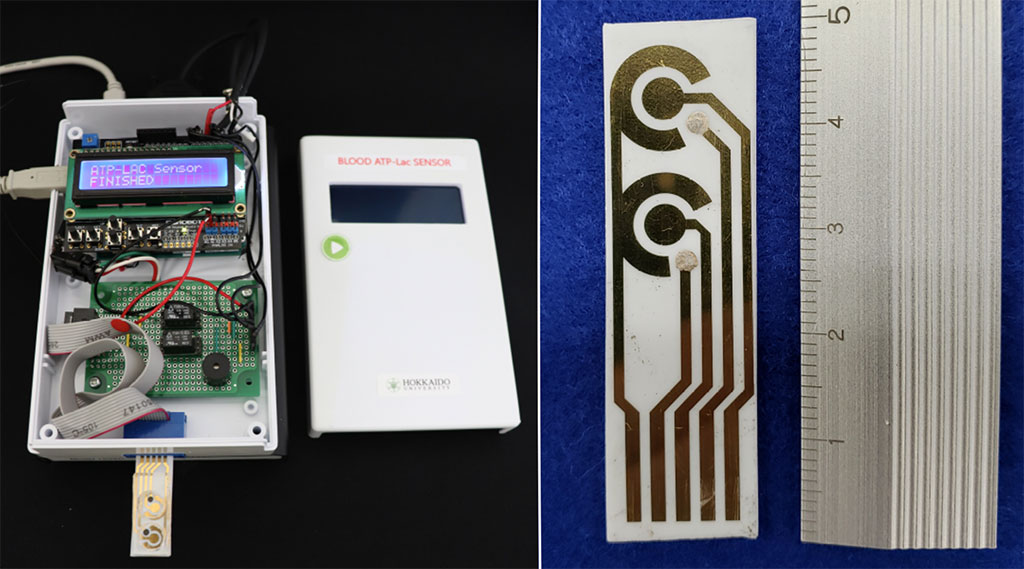Electrochemical Enzyme-Based Blood ATP and Lactate Sensor Monitors Disease Severity
Posted on 28 Feb 2022
Scientists have developed a prototype sensor that could help doctors rapidly measure adenosine triphosphate (ATP) and lactate levels in blood samples from patients, aiding in the rapid assessment of the severity of diseases.
The biosensor developed by scientists at Hokkaido University (Hokkaido, Japan) can detect levels of ATP and lactate in blood with great high sensitivity in as little as five minutes. ATP is a molecule found in every living cell that stores and carries energy. In red blood cells, ATP is produced by a biochemical pathway called the Embden–Meyerhof pathway. Severe illnesses such as multiple organ failure, sepsis and influenza reduce the amounts of ATP produced by red blood cells. As such, the severity of these illnesses could be gauged by monitoring the amounts of ATP and lactates in a patient’s blood.

The new biosensor follows a straightforward process. Chemicals are added to a blood sample to extract ATP from red blood cells. Enzymes and substrates are then added to convert ATP and lactate to the same product that can be detected by specially modified electrodes on a sensor chip. The intensity of the current generated at the electrodes depends on the amount of by-product present in the sample. The team conducted parallel tests and found that other components present in blood, such as ascorbic acid, pyruvic acid, adenosine diphosphate (ADP), urate and potassium ions, don’t interfere with the ability of the electrodes to accurately detect ATP and lactate. They also compared their sensor with those currently available and found it allowed for the relatively simple and rapid measurement of the two molecules. The researchers next aim to simplify the measurement process even further by integrating an ATP extraction method into the chip itself. They also plan to make their sensor system even more compact.
“We hope our sensor will enable disease severity monitoring and serve as a tool for diagnosing and treating patients admitted to intensive care units,” said Hokkaido University applied chemist, Akihiko Ishida.
Related Links:
Hokkaido University







 assay.jpg)






